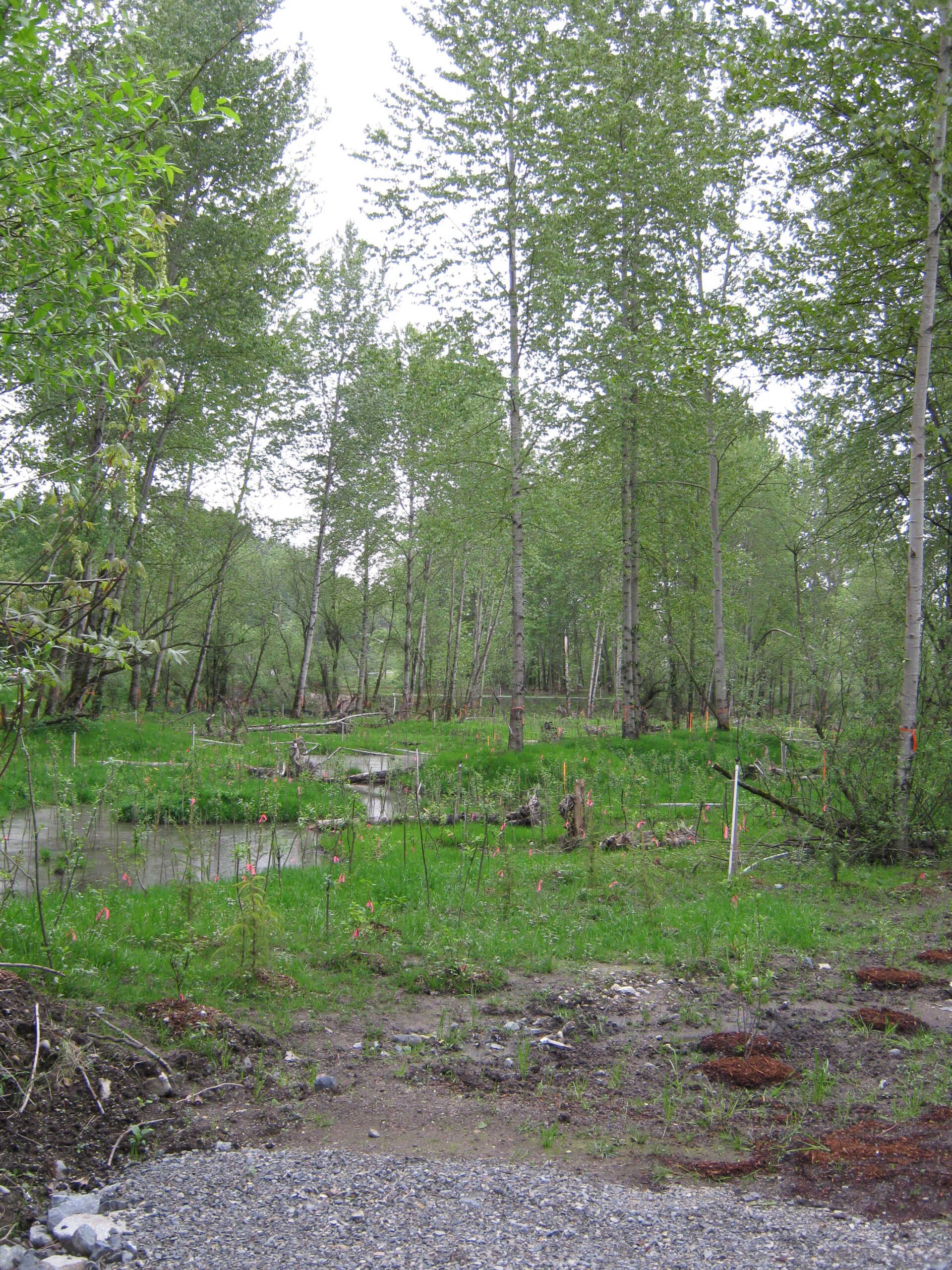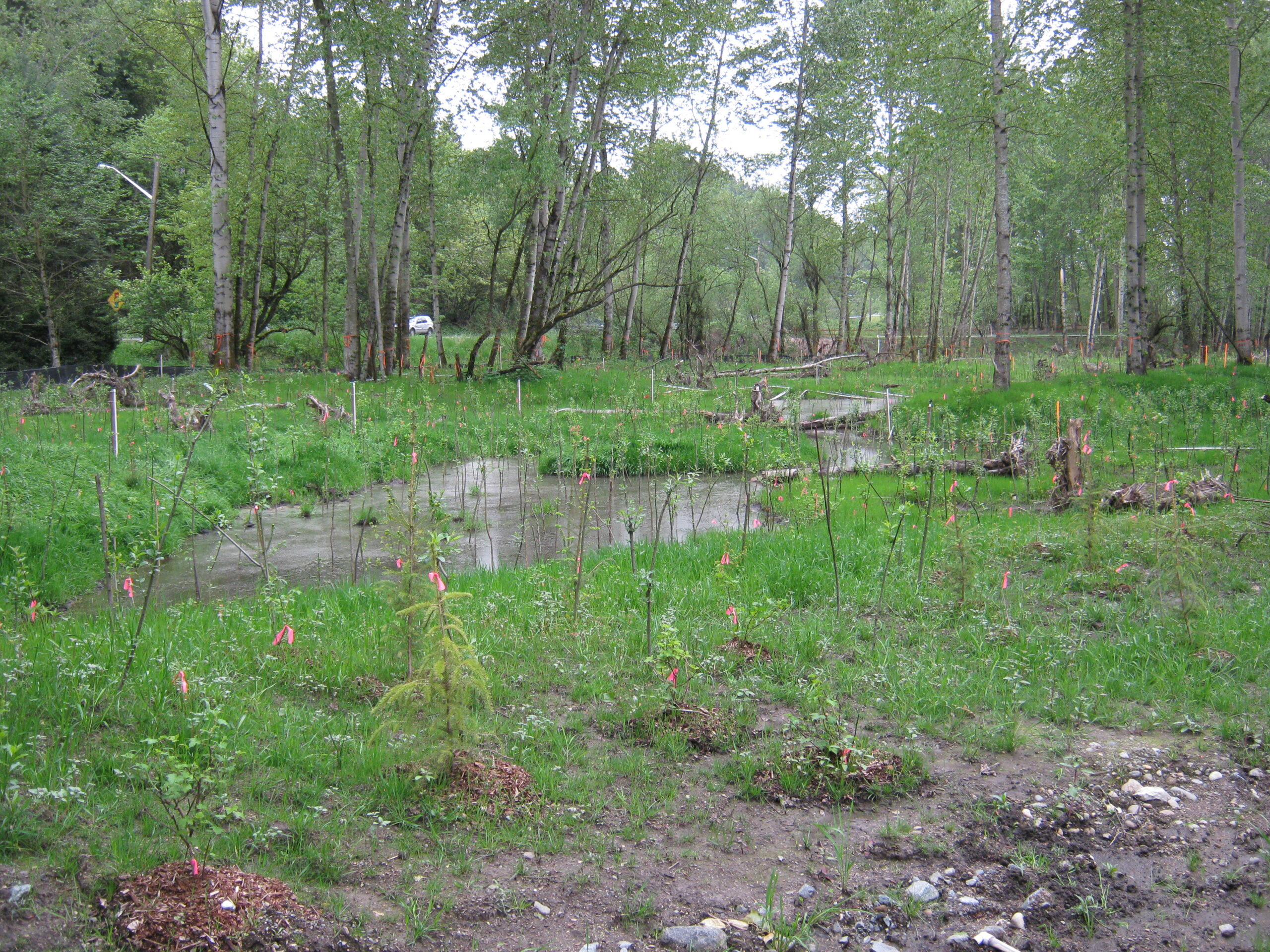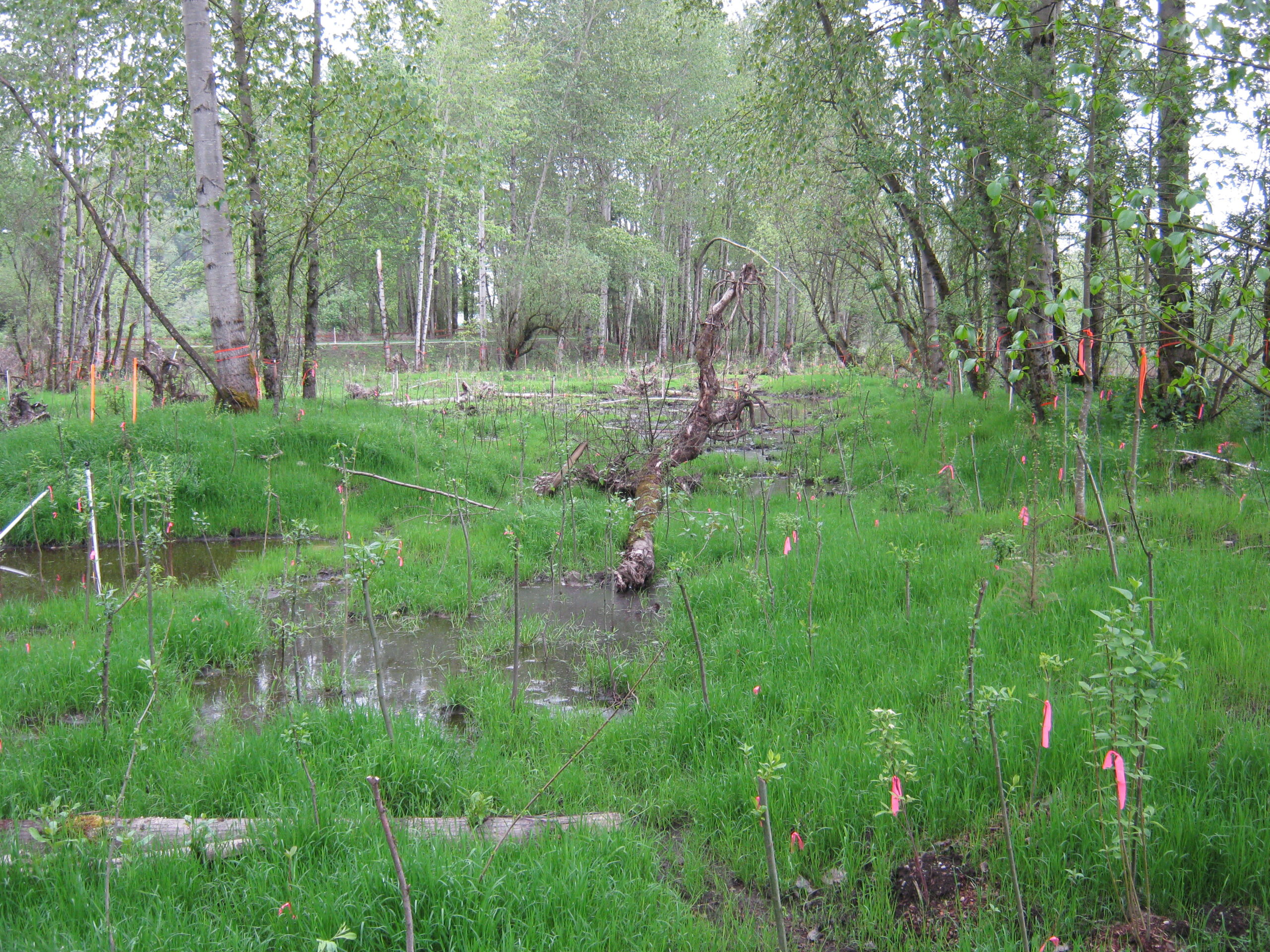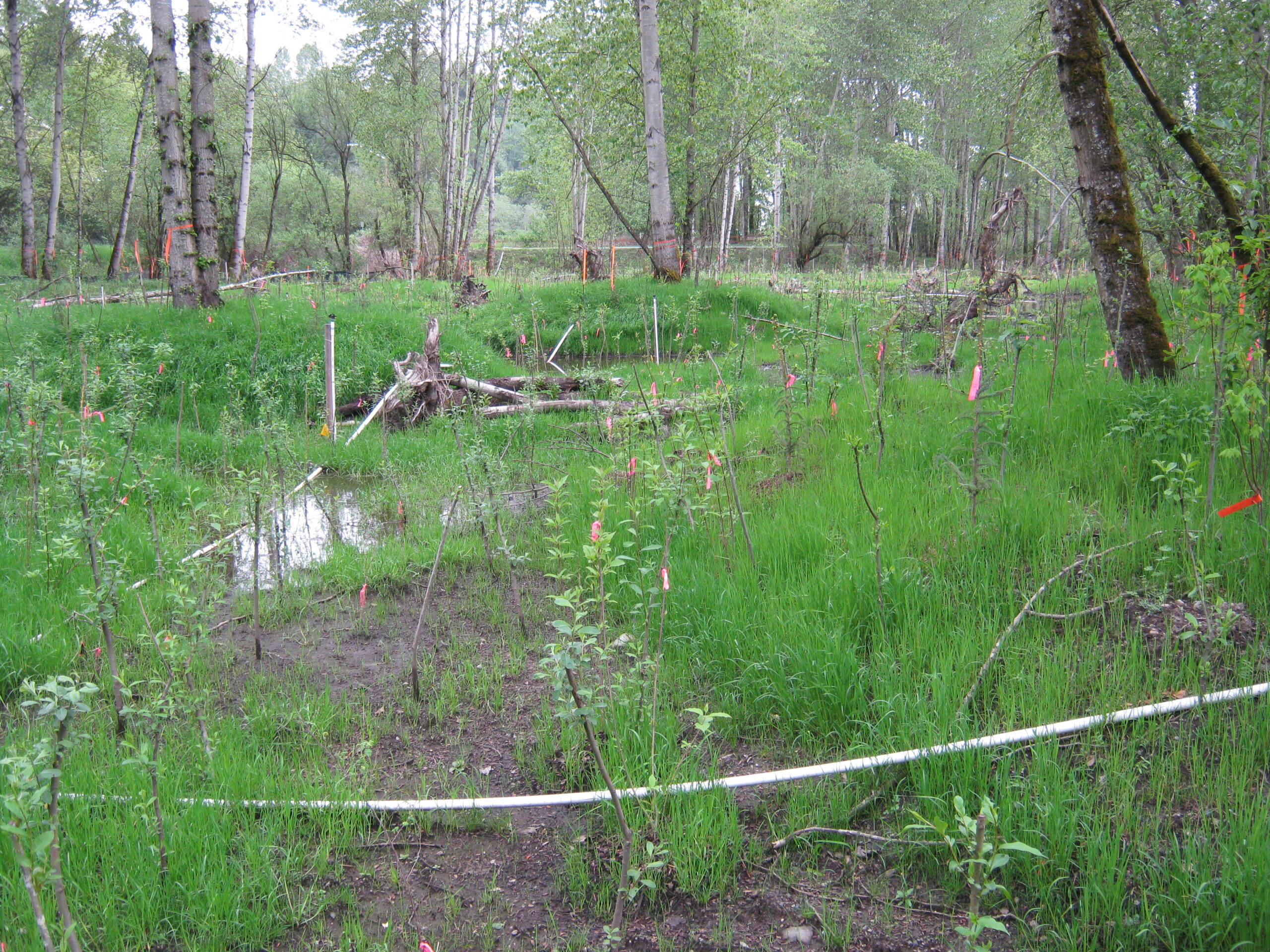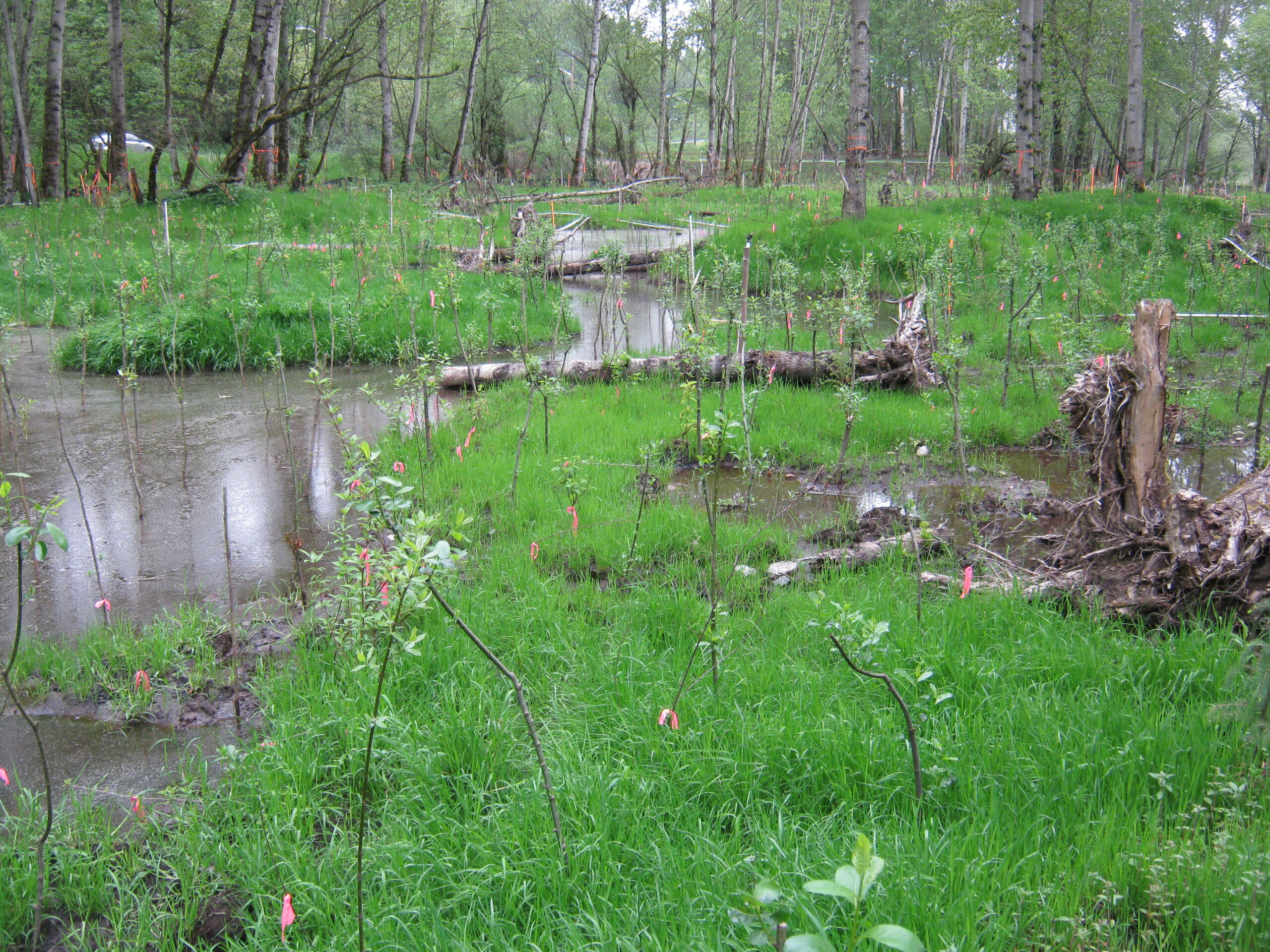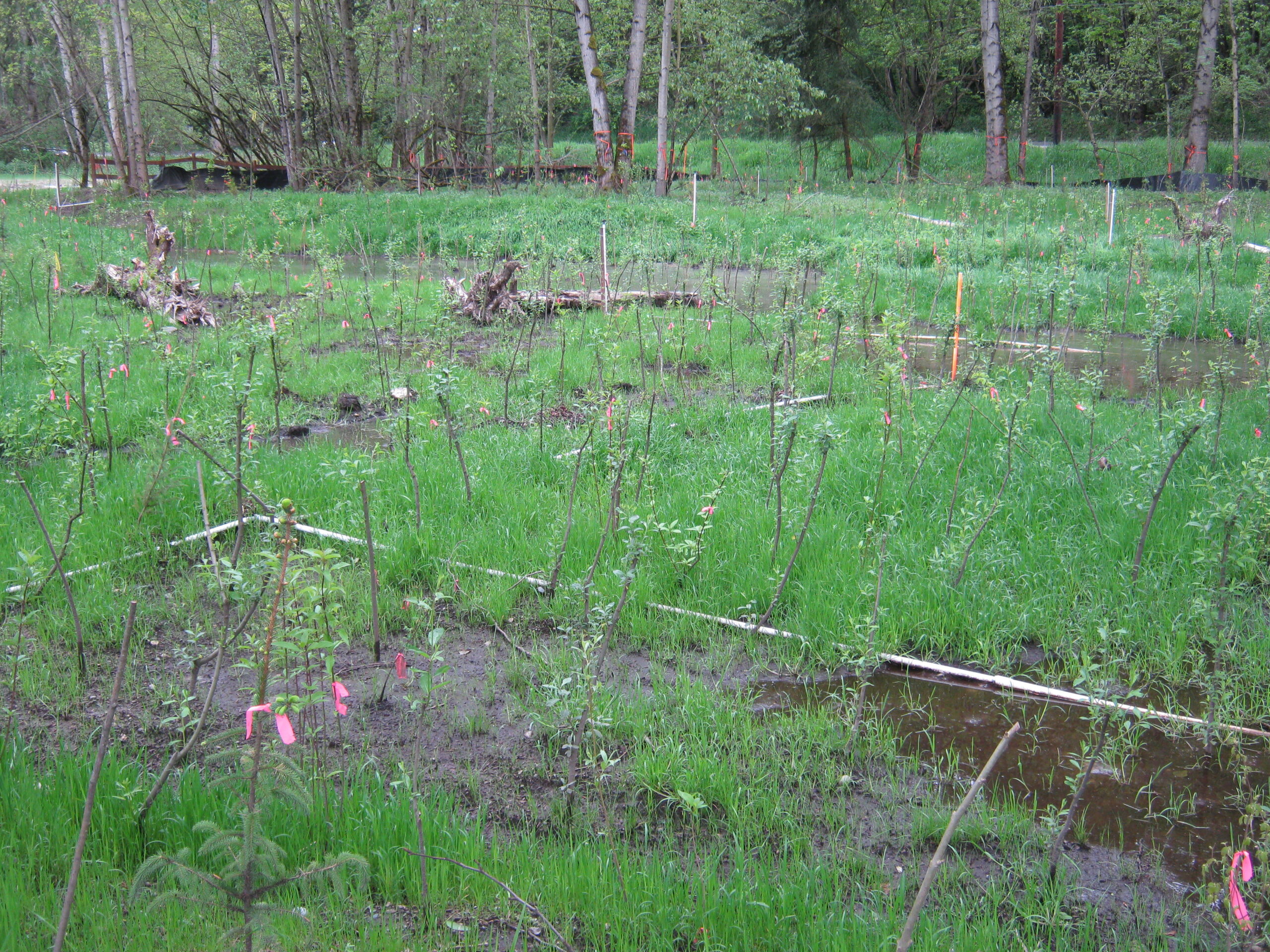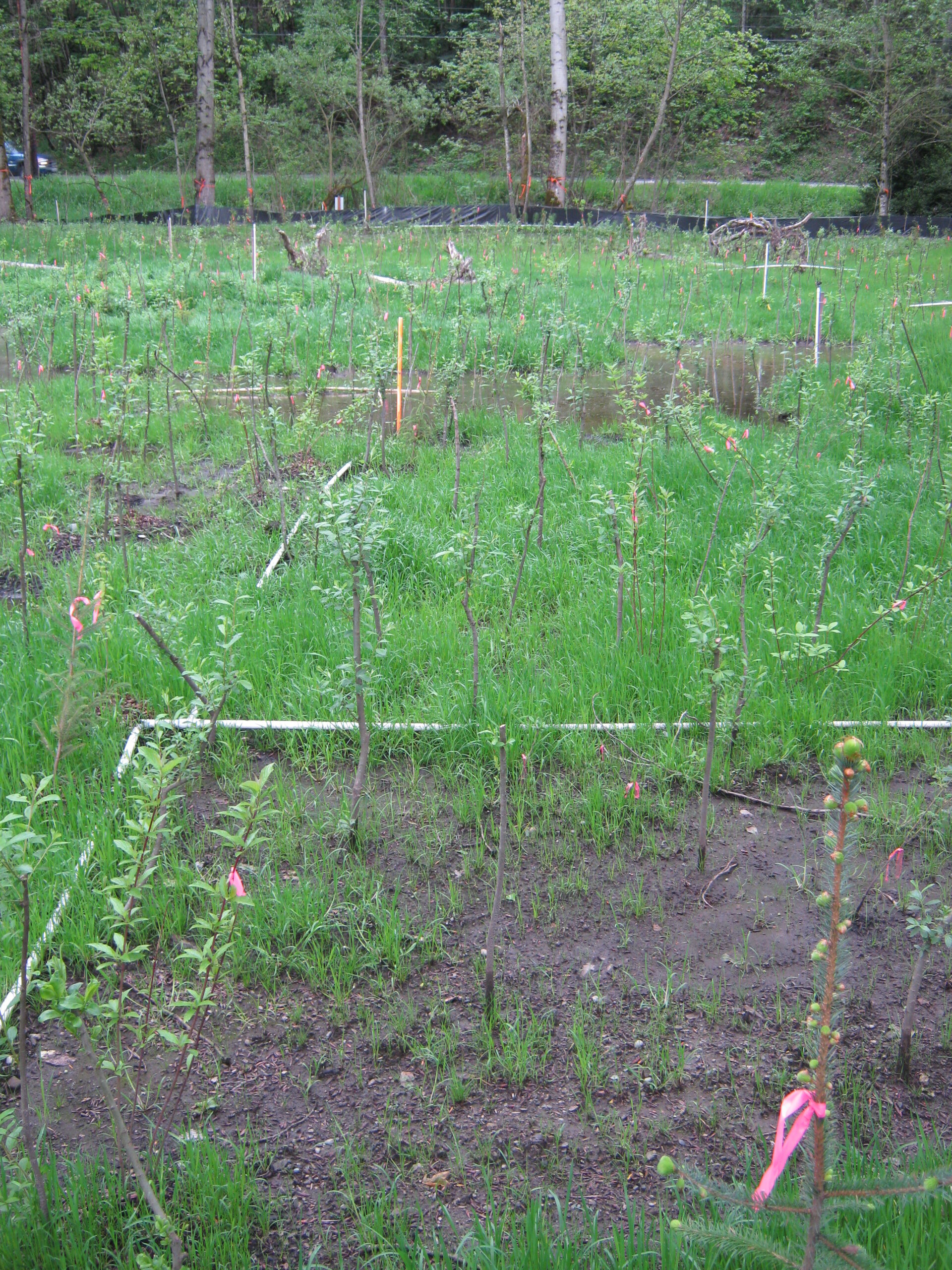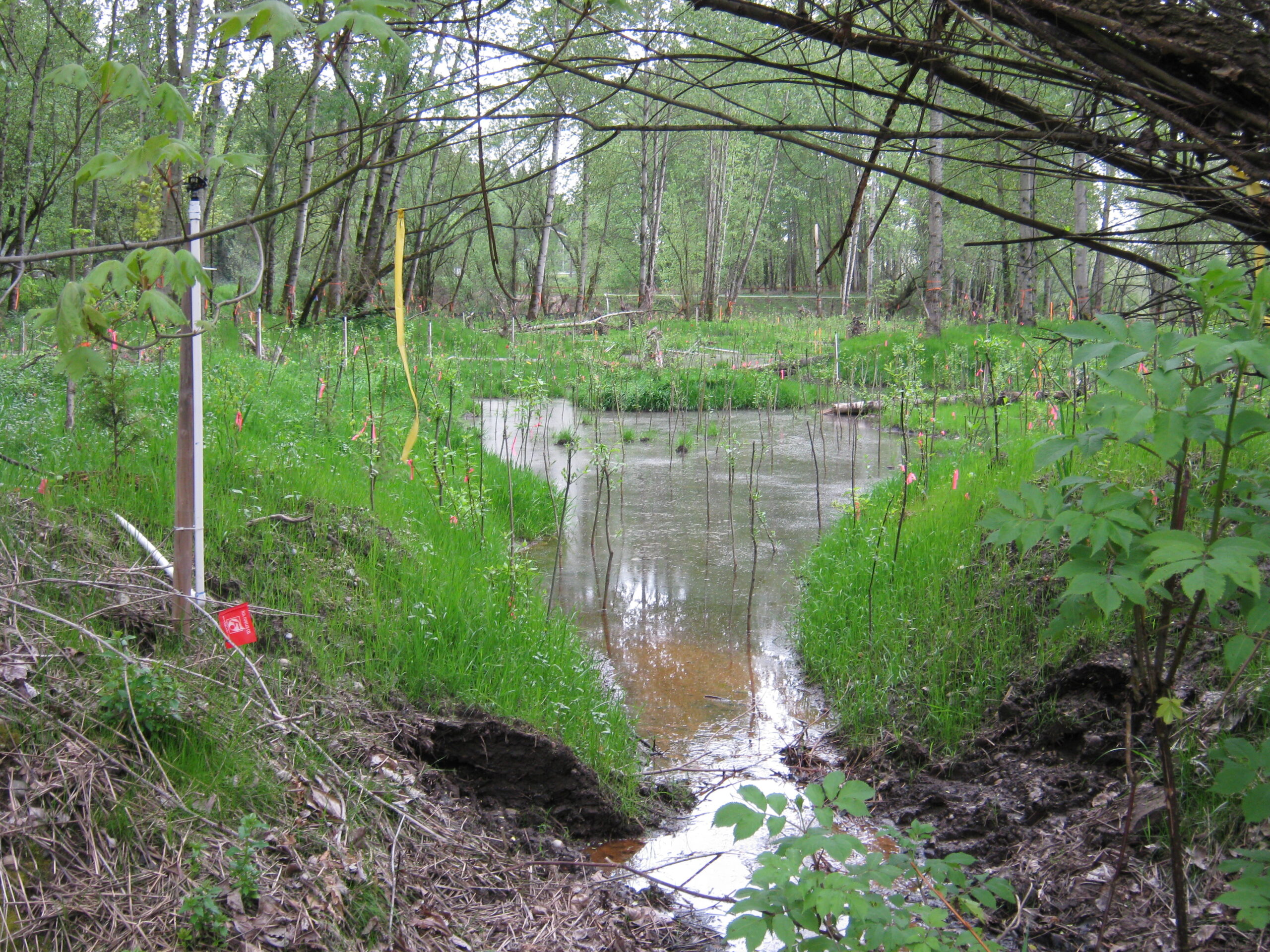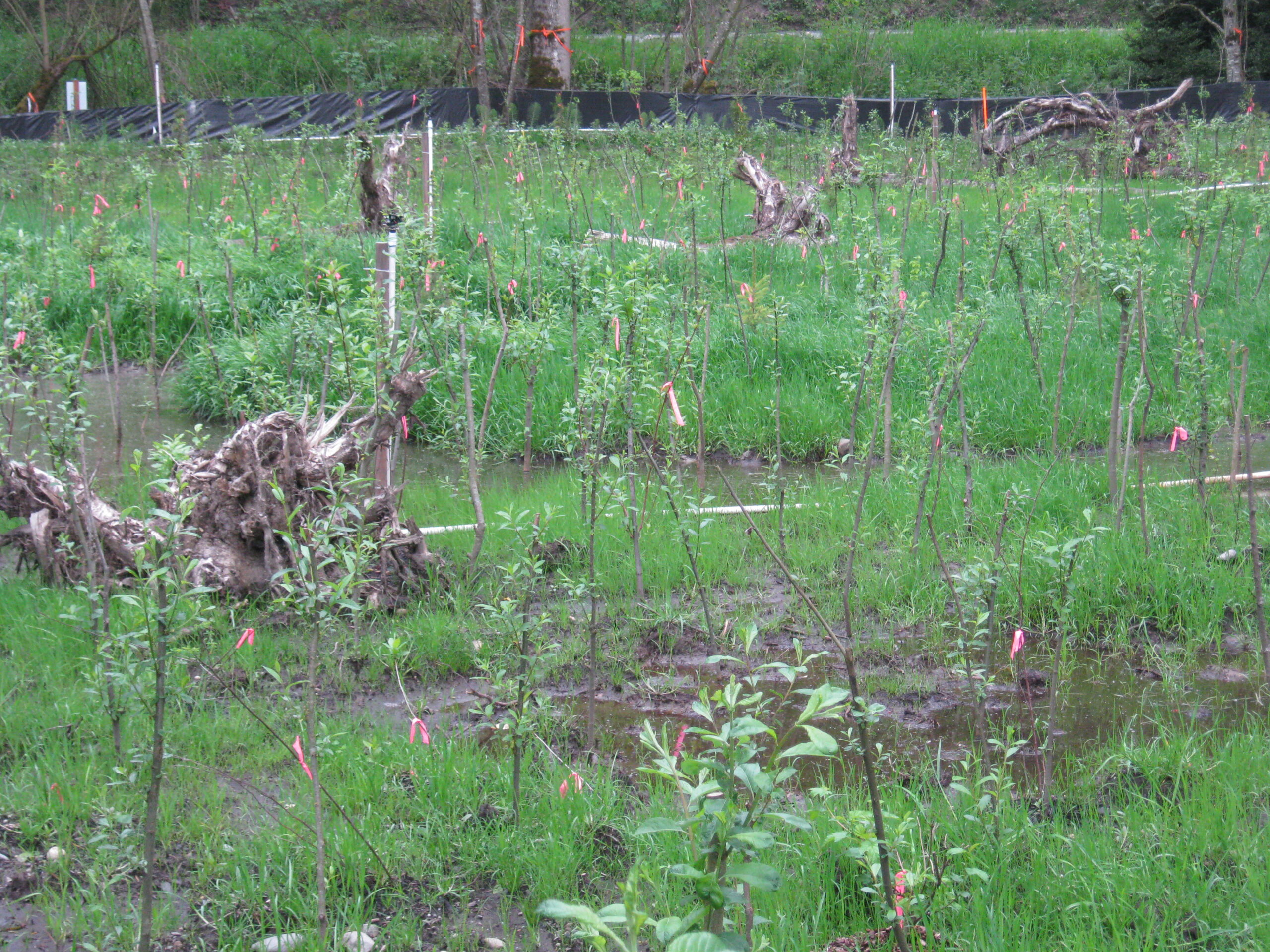Project Details
- Natural Resources & Permitting
Client
City of Auburn
Location
Auburn, WA
Team Members
Jennifer Wynkoop
Auburn Wetland Mitigation
Landau provided permitting and mitigation planning and design services to the City of Auburn in support of roadway and stormwater infrastructure construction at the Mohawk Plastics site. Our services included mitigation design and permitting support for an approximately 1.6-acre wetland fill.
Today, the site is a thriving wetland with a mix of deciduous and conifer forest with a shrub and emergent understory, and little competition from invasive species.
The Challenge
Wetland fill projects can be difficult to permit as the regulations are set up to protect wetlands and critical areas. Therefore, the wetland mitigation plan and associated documentation needed to thoroughly describe the benefits of the new wetland site and how it would provide higher quality habitat than the existing site.
The wetland fill occurred in a low-quality emergent wetland dominated by invasive species that was providing few benefits to wildlife, while the offsite mitigation design included creating more than 2 acres of high quality shrub and forested wetland to compensate for temporal and spatial loss of the low quality wetland.
Our Approach
The created wetland design preserved existing trees and created a variety of wildlife habitats in different vegetation layers, including emergent, scrub-shrub, and forest. Additionally, the shrub and forested layers were designed to provide shade to control invasive reed canarygrass on the site.
The project was designed to connect to a tributary of Algona Creek, supplying hydrology to the wetland and creating additional flood storage opportunities. In addition to surface water hydrology, the constructed wetland was designed to be fed by shallow groundwater. Landau conducted a hydrogeologic analysis of the site to determine appropriate grade elevations for groundwater contribution to the wetland.
The project was permitted through an individual permit from the USACE; Landau provided a mitigation plan and design drawings for the permit package. Landau also provided the specifications and design documents for bidding and construction.
The Solution
The mitigation installation was completed in 2009 and has since completed all required monitoring and met all performance objectives. Careful attention to wetland hydrology, design, and plant selection has led to a successful mitigation site. Today, the site is a thriving wetland with a mix of deciduous and conifer forest with a shrub and emergent understory, and little competition from invasive species.
